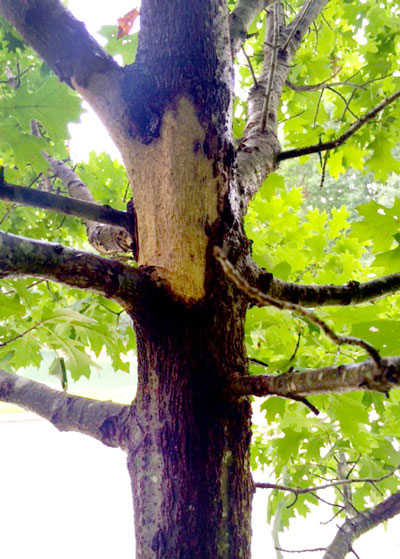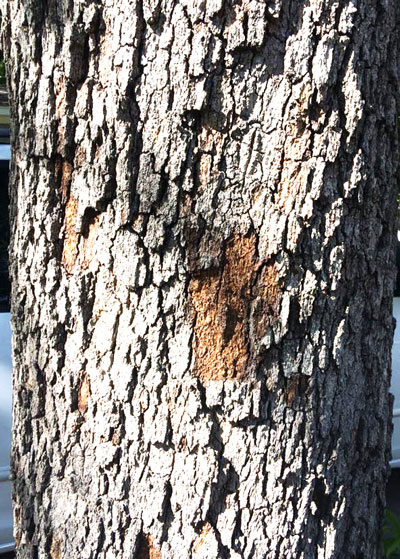Question of the Week: September 24, 2020

“Why is my oak tree losing big chunks of bark? It’s almost as if an animal is stripping it off.”
The most recent time I was asked this question, the photo that accompanied it actually looked a little bit different. It did look like an animal might have been involved. However, the photograph did not show any bark actually missing with subsequent internal tissue exposed. And there was definite browning occurring to the tree’s leaves.

More commonly, when people have asked this on my Facebook page or when they’ve sent questions to my newspaper columns, the photographs have actually had large chunks of bark on the ground beneath the trees. In those cases, it is highly likely that Hypoxylon canker has taken over the tree.
Hypoxylon canker is caused by a rather weak fungus that attacks trees, especially oaks, that have become vulnerable due to drought or other serious environmental stresses. We saw an extreme amount of it following the drought of 2011. Post oaks were especially vulnerable in the eastern third of the state.

In the past couple of years I’ve been getting more questions than normal that sounded again like Hypoxylon canker. In this case, I’m less certain of why that might be happening. Post oaks have a habit of dying almost without warning, so some of this may have been a precursor for those trees. However, I’ve referred most of these readers and listeners to certified arborists for more specific identification of the source of the problem. On-site inspection is always best.
One of my longtime advertisers and some of the people I respect most in the tree care industry, Arborilogical Services of the DFW area, have a really good write up about this disease on their website. You might find it useful.
As you read their write up, remember what they and I have told you: This disease rarely affects healthy trees. Your best means of dealing with it is to keep your trees healthy and vigorous. Avoid anything that would harm them. In the case of normal shade trees, that would mean watering and fertilizing regularly.
In the case of post oaks, it might be watering during extended dry spells, but it probably means little care beyond that. They really don’t like any special attention from humans. Above all, do nothing to impact their root zones. Don’t change the grade. Don’t cut utility lines through them. Don’t park beneath them. Don’t cover them with concrete.
